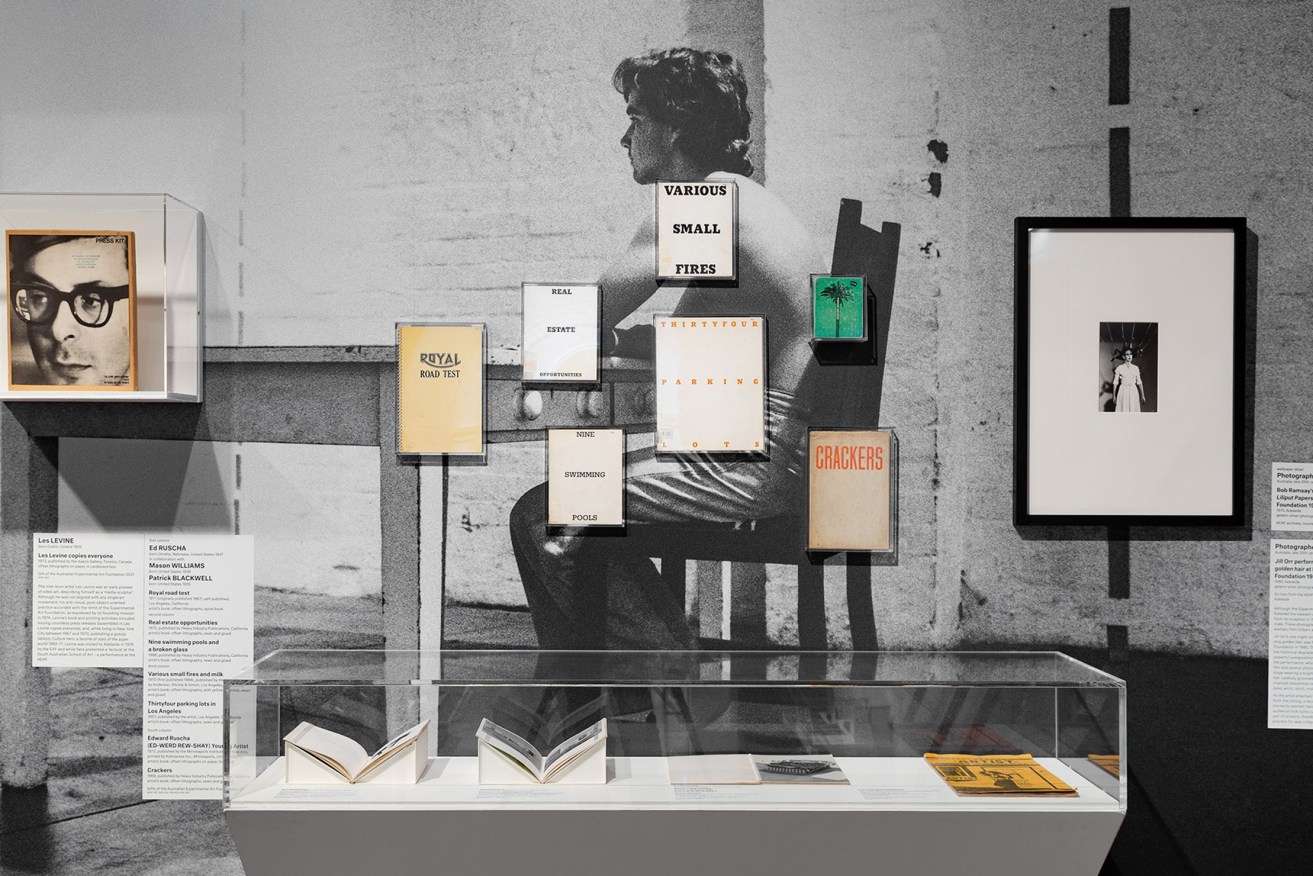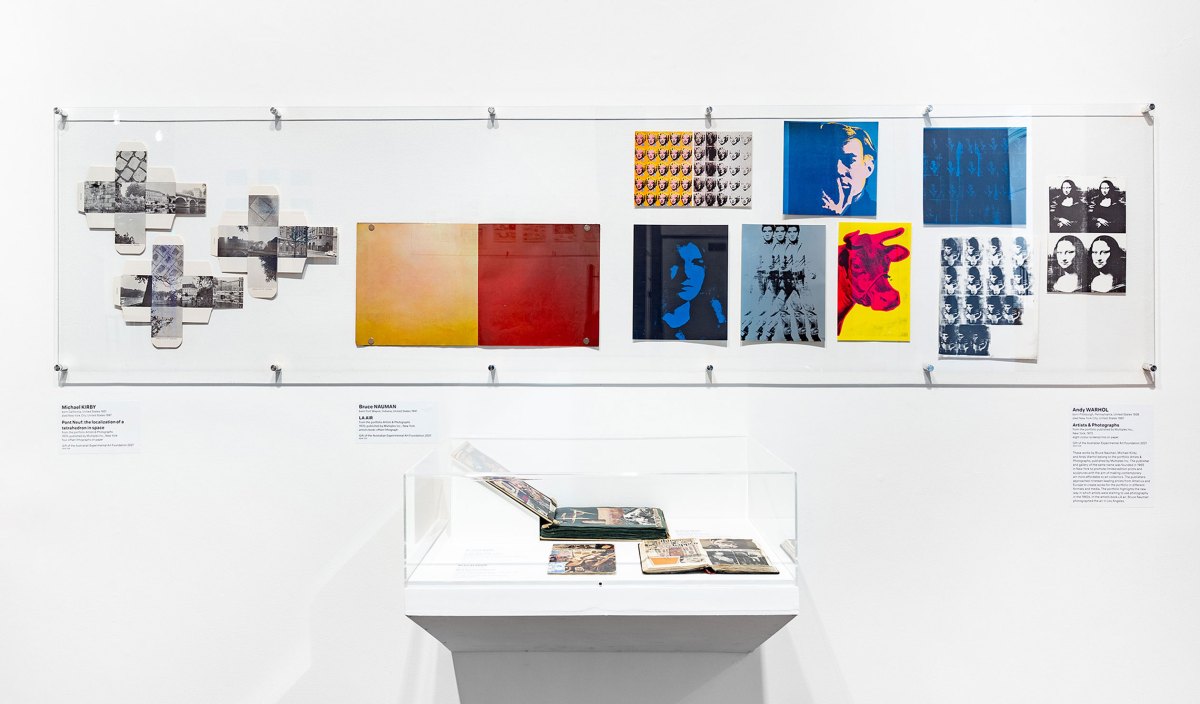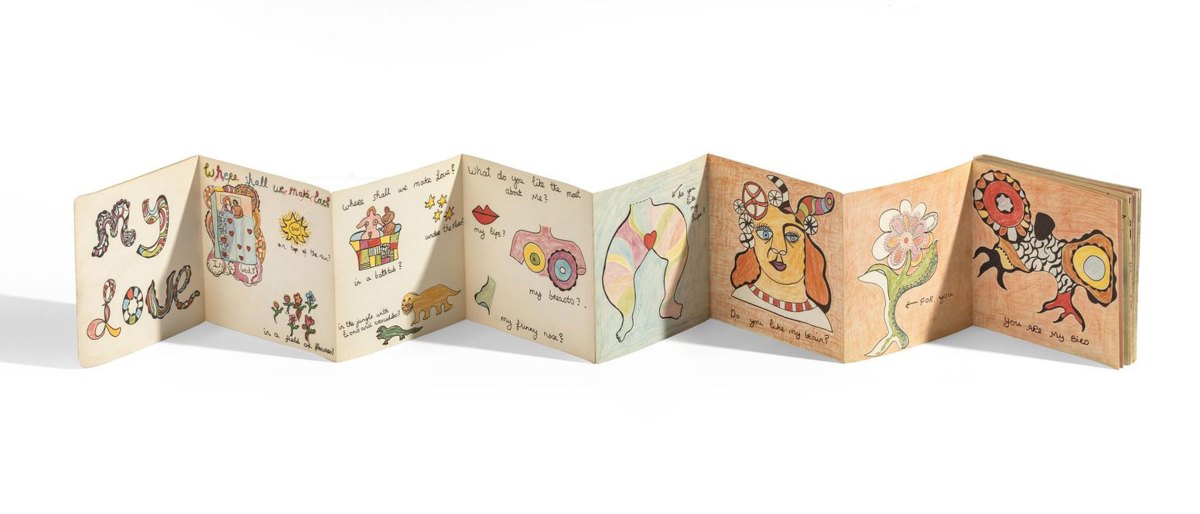Archive of artists’ books acts as a valuable time capsule
A display of artists’ books at the Art Gallery of SA highlights a major gift of more than 500 items from the Australian Experimental Art Foundation that offer insight into the radical shift in artistic values and aesthetics in the 1960s and 1970s.

An installation view of the Australian Experimental Art Foundation Book Archive, 2022, at the Art Gallery of South Australia. Photo: Saul Steed
The Adelaide-based Australian Experimental Art Foundation (AEAF) assembled its archive of artists’ books over a period of 40 years (1974–2016).
Founded in 1974 by a small group of artists, curators and theorists, the AEAF’s mission was defined by Donald Brook, one of its founding council members, as being to promote art that interrogated the status quo, was only incidentally aesthetic, and was, by definition, radical.
This important national and international organisation promoted experimental art practices and became renowned for supporting early performance art in Australia.
The Irish conceptual artist Noel Sheridan, the AEAF’s inaugural director (1975–80), placed books at the centre of the foundation, both as a physical collection and as a way of connecting with artists and art centres throughout the world.
Sheridan’s commitment to the expanding field of book art saw him co-organise a major exhibition of US book art in 1979. The exhibition, Artists Bookworks, comprised more than 700 artists’ books from New York’s Franklin Furnace and the Los Angeles Institute of Contemporary Art, and was augmented with a selection of recent Australian books. When the US works were returned after being exhibited in Melbourne, Sydney, Brisbane and Adelaide, the Australian works that had been part of the exhibition travelled to New York and other US cities, becoming (according to author Peter Di Sciascio) the first international exhibition of Australian artists’ books.
Following Sheridan’s departure from the AEAF, the foundation’s archive of artists’ books continued to grow, with exhibiting artists responding to it and contributing their own works until the 2010s. The cumulative, incremental history of the collection means the archive acts as a record of the organisation’s rich history and as a time capsule, the objects preserving in their pages worlds that have since passed.
The multivariant form of the artist book defies categorisation, yet its capacity to activate a particular kind of engagement with the viewer and reader has made it a compelling field for many. In their introduction to the Artists’ Books USA catalogue in 1978, Martha Wilson, founder of the Franklin Furnace Archive, and curator Peter Frank sought to explain the intricate and complex impulses at work in the field of artists’ books:
Book art is not a single style, it is many styles finding a medium. It is not a single medium, it is many media finding a format. It is not a single format, it is many formats finding a context. It is not a single context, it is many contexts finding an artist. It is not a single artist, it is many artists finding a public.

Works in the Australian Experimental Art Foundation Book Archive at AGSA. Photo: Saul Steed
The acquisition of the AEAF book collection enables an insight into the radical shift in values and aesthetics in the 1960s and 1970s, in particular the practices of Fluxus artists. Their interest in the book as a motivator of artistic and social exchange was not dependent on an established art market, with museum systems influencing a worldwide movement, of which the AEAF was a part. The movement, which was particularly active in New York, Germany and Japan, had close links to experimental music and promoted collaboration between disciplines, and participatory art events.
On display at AGSA are highlights from the collection, including works from the portfolio Artists & Photographs, published in 1970, which sought to explore how contemporary artists were using photography in a new way. The portfolio includes works by conceptual and pop artists Michael Kirby, Bruce Nauman and Andy Warhol, among others.
There are also artist books by Californian artist Ed Ruscha, hand-made collage books by Australian artists Richard and Pat Larter, and publications by Maria Kozic.
Other works of note include a fold-out book, My love where shall we make love?, 1969, by the largely self-taught French-American artist Niki de Saint Phalle. In the book, de Saint Phalle addresses her words and drawings to her artistic collaborator and future husband, Jean Tinguely. Each page of the book combines brightly coloured drawings with a question to her lover, with the words and images conveying both the sensuality and the joy of their union.

Niki de Saint Phalle, My love where shall we make love, c.1971, Malmo, Sweden; gift of the Australian Experimental Art Foundation 2021, Art Gallery of SA; © Niki De Saint Phalle. Photo: Saul Steed
In John Baldessari’s Throwing Three Balls in the Air to Get a Straight Line, 1973, the American artist set out to see whether this aim was achievable. He asked his wife to throw a set of three orange balls up in the air in such a way that they would form a straight line as he photographed them. The attempts were to be restricted to an arbitrary number, in this instance, 36, which was the number of shots on a 35mm roll of film. The best 12 attempts were then presented in a portfolio.
The AEAF book collection can be searched online through the Libraries Australia catalogue and works can be viewed by appointment by emailing [email protected]. A selection of the AEAF artists’ books are on display at AGSA in Gallery 6 until November 6, 2022.
Maria Zagala is associate curator of Prints, Drawings and Photographs at the Art Gallery of South Australia.




